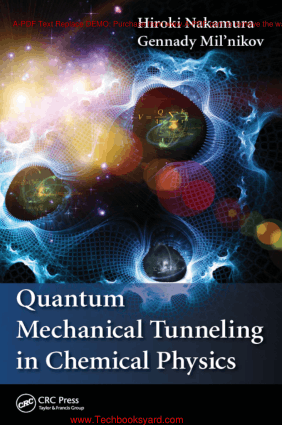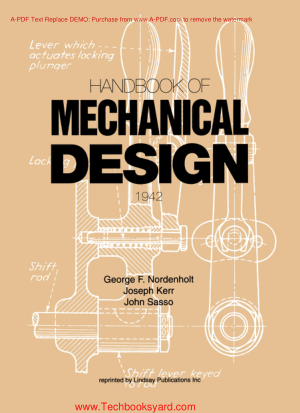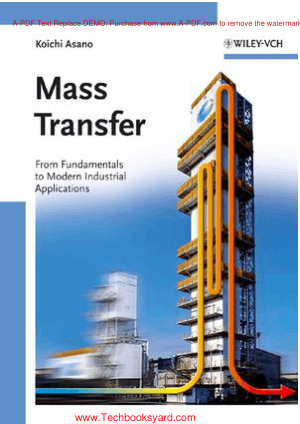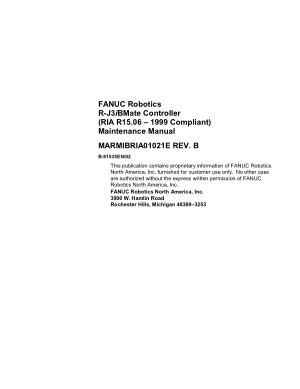Contents
Preface . . . . . . . . . . . . . . . . . . . . . . . . . . . . . . . . . . . . . . . . . . . . . . . . . . . . . . . . . . . . . . . . . . . ix
Chapter 1 Introduction . . . . . . . . . . . . . . . . . . . . . . . . . . . . . . . . . . . . . . . . . . . . . . . . . . . 1
Chapter 2 One-Dimensional Theory . . . . . . . . . . . . . . . . . . . . . . . . . . . . . . . . . . . . . . . 5
2.1 Exactly Solvable Cases . . . . . . . . . . . . . . . . . . . . . . . . . . . . . . . . . . . . 5
2.1.1 Case of Delta-Function Barrier . . . . . . . . . . . . . . . . . . . . . 5
2.1.2 Case of Parabolic Potential Barrier. . . . . . . . . . . . . . . . . .6
2.1.3 Case of Eckart Potential Barrier . . . . . . . . . . . . . . . . . . . . 8
2.2 WKB Approximation and Connection Formula . . . . . . . . . . . . . 10
2.3 Comparison Equation Method. . . . . . . . . . . . . . . . . . . . . . . . . . . . .11
2.4 Diagrammatic Technique . . . . . . . . . . . . . . . . . . . . . . . . . . . . . . . . . 13
2.5 Instanton Theory and Modified WKB Method . . . . . . . . . . . . . . 16
2.5.1 Instanton Theory . . . . . . . . . . . . . . . . . . . . . . . . . . . . . . . . 16
2.5.2 Modified WKB Method . . . . . . . . . . . . . . . . . . . . . . . . . . 24
2.6 Energy Levels in a Double Well Potential . . . . . . . . . . . . . . . . . . 26
2.6.1 Asymmetric Double Well Potential . . . . . . . . . . . . . . . . 26
2.6.2 Symmetric Double Well Potential . . . . . . . . . . . . . . . . . 28
2.7 Decay of Metastable State . . . . . . . . . . . . . . . . . . . . . . . . . . . . . . . . 29
Chapter 3 Two-Dimensional Theory . . . . . . . . . . . . . . . . . . . . . . . . . . . . . . . . . . . . . . 33
3.1 WKB Theory. . . . . . . . . . . . . . . . . . . . . . . . . . . . . . . . . . . . . . . . . . . .33
3.2 Instanton Theory . . . . . . . . . . . . . . . . . . . . . . . . . . . . . . . . . . . . . . . . 40
Chapter 4 Multidimensional Effects: Peculiar Phenomena. . . . . . . . . . . . . . . . . . .43
4.1 Effects of Vibrational Excitation on Tunneling Splitting. . . . . .43
4.1.1 Adiabatic and Sudden Approximations . . . . . . . . . . . . .43
4.1.2 Case of Symmetric Mode Coupling Potential . . . . . . . 44
4.1.3 Case of Antisymmetric Mode Coupling Potential . . . 49
4.1.4 Case of Squeezed (Sqz) Double Well Potential . . . . . . 50
4.2 Insufficiency of Two-Dimensional Model . . . . . . . . . . . . . . . . . . 54
4.3 Proton Tunneling in Tropolone . . . . . . . . . . . . . . . . . . . . . . . . . . . . 54
4.3.1 Available Experimental Data . . . . . . . . . . . . . . . . . . . . . . 54
4.3.2 Tunneling Dynamics in the Ground ˜X State . . . . . . . . 56
4.3.3 Analysis of Tunneling Dynamics of the
Excited ˜A State. . . . . . . . . . . . . . . . . . . . . . . . . . . . . . . . . . 59
Chapter 5 Nonadiabatic Tunneling . . . . . . . . . . . . . . . . . . . . . . . . . . . . . . . . . . . . . . . 61
5.1 Definition and Qualitative Explanation . . . . . . . . . . . . . . . . . . . . . 61
5.2 One-Dimensional Theory . . . . . . . . . . . . . . . . . . . . . . . . . . . . . . . . . 64
5.2.1 Case of E ≤ Et . . . . . . . . . . . . . . . . . . . . . . . . . . . . . . . . . 67
5.2.2 Case of Et ≤ E ≤ Eb . . . . . . . . . . . . . . . . . . . . . . . . . . . . 68
5.2.3 Case of Eb ≤ E . . . . . . . . . . . . . . . . . . . . . . . . . . . . . . . . . 68
Chapter 6 Multidimensional Theory of Tunneling Splitting. . . . . . . . . . . . . . . . . .75
6.1 General Formulation . . . . . . . . . . . . . . . . . . . . . . . . . . . . . . . . . . . . . 75
6.1.1 Multidimensional Extension of the
Instanton Theory . . . . . . . . . . . . . . . . . . . . . . . . . . . . . . . . 75
6.1.2 WKB Approach in Cartesian Coordinates . . . . . . . . . . 82
6.1.3 WKB Approach in the Case of General
Hamiltonian in Curved Space . . . . . . . . . . . . . . . . . . . . . 85
6.2 How to Find Instanton Trajectory . . . . . . . . . . . . . . . . . . . . . . . . . .89
6.3 How to Use the Theory . . . . . . . . . . . . . . . . . . . . . . . . . . . . . . . . . . . 92
6.3.1 Evaluation of the Pre-Exponential Factor . . . . . . . . . . . 92
6.3.2 Incorporation of High Level of ab initio
Quantum Chemical Calculations . . . . . . . . . . . . . . . . . . . 95
6.4 Case of Low Vibrationally Excited States. . . . . . . . . . . . . . . . . . .96
6.4.1 One- and Two-Dimensional Cases . . . . . . . . . . . . . . . . . 96
6.4.2 Multidimensional Case in Terms of
Cartesian Coordinates . . . . . . . . . . . . . . . . . . . . . . . . . . . . 99
6.4.3 Case of General Multidimensional
Curved Space . . . . . . . . . . . . . . . . . . . . . . . . . . . . . . . . . . 103
Chapter 7 Numerical Applications to Polyatomic Molecules . . . . . . . . . . . . . . . 109
7.1 N-Dimensional Separable Potential Model . . . . . . . . . . . . . . . . 109
7.2 Hydroperoxy Radical HO2 . . . . . . . . . . . . . . . . . . . . . . . . . . . . . . 111
7.3 Vinyl Radical C2H3 . . . . . . . . . . . . . . . . . . . . . . . . . . . . . . . . . . . . . 120
7.4 Malonaldehyde C3O2H4 . . . . . . . . . . . . . . . . . . . . . . . . . . . . . . . . . 128
7.5 Formic Acid Dimer (DCOOH)2 . . . . . . . . . . . . . . . . . . . . . . . . . . 139
Chapter 8 Decay of Metastable States . . . . . . . . . . . . . . . . . . . . . . . . . . . . . . . . . . . 149
8.1 General Formulation . . . . . . . . . . . . . . . . . . . . . . . . . . . . . . . . . . . . 149
8.1.1 Determination of Instanton Trajectory . . . . . . . . . . . . 149
8.1.2 Formulation in Terms of Cartesian Coordinates . . . . 151
8.1.3 General Canonically Invariant Formulation . . . . . . . . 154
8.2 Numerical Application . . . . . . . . . . . . . . . . . . . . . . . . . . . . . . . . . . 158
Chapter 9 Tunneling in Chemical Reactions . . . . . . . . . . . . . . . . . . . . . . . . . . . . . . 163
9.1 Determination of Caustics and Propagation in
Tunneling Region . . . . . . . . . . . . . . . . . . . . . . . . . . . . . . . . . . . . . . 163
9.1.1 Caustics in Chaotic Henon-Heiles System . . . . . . . . . 166
9.1.2 Caustics in Chemical Reaction Dynamics . . . . . . . . . 167
9.2 Direct Evaluation of Reaction Rate Constant . . . . . . . . . . . . . . 174
9.2.1 Adiabatic Chemical Reaction . . . . . . . . . . . . . . . . . . . . 174
9.2.2 Nonadiabatic Chemical Reaction . . . . . . . . . . . . . . . . . 178
Chapter 10 Concluding Remarks and Future Perspectives . . . . . . . . . . . . . . . . . . 183
Appendix A Proofs of Equation (2.95) and Equation (2.110) . . . . . . . . . . . . . . . 185
Appendix B Derivation of Equation (6.80) . . . . . . . . . . . . . . . . . . . . . . . . . . . . . . . 187
Appendix C Herring Formula in Curved Space . . . . . . . . . . . . . . . . . . . . . . . . . . . 189
Appendix D Derivation of Equation (6.97) . . . . . . . . . . . . . . . . . . . . . . . . . . . . . . . 191
Appendix E Computer Code to Calculate Instanton Trajectory . . . . . . . . . . . . . . 193
Appendix F Derivation of Some Equations in Section 6.4.2 . . . . . . . . . . . . . . . . 201
Bibliography . . . . . . . . . . . . . . . . . . . . . . . . . . . . . . . . . . . . . . . . . . . . . . . . . . . . . . . . . . . . 205
Index . . . . . . . . . . . . . . . . . . . . . . . . . . . . . . . . . . . . . . . . . . . . . . . . . . . . . . . . . . . . . . . . . . . 213
Preface
In this book we mainly discuss the following three tunneling phenomena based on
our recent theoretical developments: (1) energy splitting, or tunneling splitting, in
symmetric double well potential, (2) decay of metastable state through tunneling, and
(3) tunneling effects in chemical reactions. The corresponding physical processes can
be naively understood in terms of a reaction path in which (1) two endpoints are fixed,
(2) one endpoint is fixed and one is free, and (3) both ends are free. Quantum mechanical
tunneling manifests itself in a very wide range of natural phenomena and the
subjects we deal with here constitute only a small portion of the whole area. In spite
of the long history of studies of quantum mechanical tunneling phenomena, however,
the theory of multidimensional tunneling has not yet been satisfactorily developed.
Recently, we have successfully developed practical and useful methods applicable
to real multidimensional systems for the above-mentioned problems. Basic theories,
practical methodologies, and actual numerical applications to real molecular systems
are presented so that the reader can hopefully comprehend the basic concepts and
dynamics of multidimensional tunneling phenomena and use the methods directly
in various problems of molecular spectroscopy and chemical dynamics, if necessary.
Insufficiency of the low-dimensional treatments that are often employed for
practical problems and intriguing effects of multidimensionality are demonstrated
and clarified conceptually as well as numerically. Furthermore, attention is called
to the nonadiabatic tunneling phenomenon, which is quite ubiquitous in molecular
systems and yet manifests unique and intriguing phenomenon in comparison with ordinary
tunneling. In this book, quite a bit of mathematics is used for the development
and explanation of basic theories; thus a background knowledge of mathematics
is required at the level of graduate students. This book is intended as a standard
reference for comprehending the phenomena and solving practical problems in the
fields of chemical physics. H. N. mainly wrote the whole contents and thus is responsible
for all chapters. G. M. shares responsibility for Chapters 6, 7, and 8 and
Section 9.1.
We would like to thank all the collaborators for their contributions in the development
of the methods and various applications to real molecular systems that
clearly demonstrate the usefulness of our methods. H. N. would like to express his
sincere thanks to National Chiao Tung University in Hsinchu, Taiwan, and people
at the Institute of Molecular Science, Department of Applied Chemistry, Faculty of
Science of the university for providing this nice opportunity to work on this book.
Especially, he is deeply indebted to Professors S. H. Lin and Y. P. Lee for their hospitality.
G. M. thanks his colleagues and friends in Okazaki who have turned this
place into his second hometown after spending seven wonderful years in the Institute
for Molecular Science, National Institutes of Natural Sciences. Acknowledgment is
also due to the following societies and publishers for permission of reproducing various
copyright materials: American Institute of Physics, American Chemical Society,
Elsevier Science B.V., and World Scientific Publishing.






